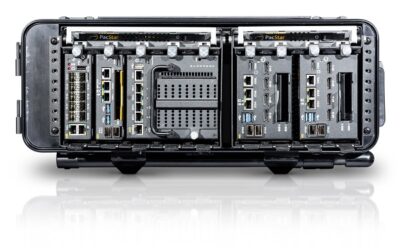UK’s Future Fighter Pioneers Innovation
Team TEMPEST – a UK technology and defence partnership formed by BAE Systems, Leonardo, MBDA, Rolls-Royce and the Royal Air Force (RAF), revealed some of the latest concepts underlying the development of the RAF’s next-generation combat systems on 15 October.
Also involving hundreds of high-tech companies – many of which are small and medium-sized enterprises (SMEs) – and academic institutions across the UK, TEMPEST seeks to develop a ground-breaking combat system to enter service from 2035. The project is one of the UK’s most ambitious technological endeavours and will exploit new technologies as they evolve to respond to the changing nature of the battlespace, addressing increasingly high-tech and complex threats and conflict.
Among key insights revealed:
• Leonardo UK is developing new radar technology capable of providing over 10,000 times more data than existing systems. The ‘Multi-Function Radio Frequency System’ will collect and process unprecedented amounts of data, equivalent to the internet traffic of a large city such as Edinburgh, every second. Processed on-board, this will give TEMPEST a battle-winning edge, locating and targeting being targeted itself. The sensor will provide abilities beyond traditional radar, with all-digital technology providing operators with an exceptionally clear view of the battlespace and potential targets. Leonardo has already successfully tested complete sub-systems and plans airborne demonstrations shortly.
• BAE Systems has begun flight-testing concepts for TEMPEST’s ‘wearable cockpit,’ designed to provide pilots with split-second advantage. Cockpit controls will be replaced with augmented and virtual reality displays projected directly inside the helmet visor, instantly configured to suit any mission. Concepts including human-autonomy teaming are also being developed, where a ‘virtual co-pilot’ could take on some of the pilot’s responsibilities. Still under development, this could take the form of an ‘avatar’ built into the cockpit to interact with the pilot.
• BAE Systems has also been trialling ‘psycho-physiological’ technologies, including eye-tracking, to study physical and cognitive processes to better understand increasing exertion, stress, workload and fatigue. Trials are under way in controlled test flight conditions in a TYPHOON: results will inform further development to better understand pilot cognitive behaviour and processes to inform further development.
• MBDA UK has embedded an engineer in the wearable cockpit team, ensuring early introduction of weapons concepts that exploit these future technologies. This close partnership approach between MBDA UK and BAE Systems will allow the companies to help early collaboration, shaping how weapons systems information and operation is optimised for the pilot.
• At the same time, Rolls-Royce engineers have been developing advanced combustion system technology. A next-generation system will need to be hotter than any previous platform, increasing engine efficiency, meaning it can go further, faster, or produce less carbon dioxide. Rolls-Royce has been exploring advanced composites and additive manufacturing, producing lightweight, more power-dense components capable of operating at these higher temperatures.
These concepts are part of a wider research effort to develop technologies that could be used to create a next-generation combat air system. Collectively, Team TEMPEST partners are developing more than 60 technology demonstrations in the fields of sensing, data management and autonomy to prove world-leading processes and technologies on the programme.
“The collaborative relationship between Team TEMPEST and our network of academic and SME partners enables us to bring together the ‘best of the best’ engineering talent from across the UK. Crucially, we are embracing new ways of working as an integrated team to dramatically improve efficiency and pace – sharing intelligence and refining our concepts digitally to deliver innovations that will shape the next generation combat air system. Our new radar technology is a concrete example of the gains this approach has already brought, costing 25% less to develop while providing over 10,000 times more data than existing systems,” explained Iain Bancroft, Director of Major Air Programmes at Leonardo UK.
TEMPEST is an ambitious military programme, expected to deliver significant benefits over its lifetime and to ensure the UK is able to sustain its world-leading combat air sector; preserving sovereign capability and the critical skills needed to deliver independent military freedom of action and ensuring national security. It will also bring benefits through investment in people, technology and infrastructure, supporting the national economy and long-term prosperity.
In July, seven further companies signed agreements to progress opportunities to work on future combat air concepts and underpinning technologies across Team TEMPEST, including Bombardier Belfast, Collins Aerospace in the UK, GE Aviation UK, GKN Aerospace, Martin-Baker, QinetiQ, and Thales UK.

























